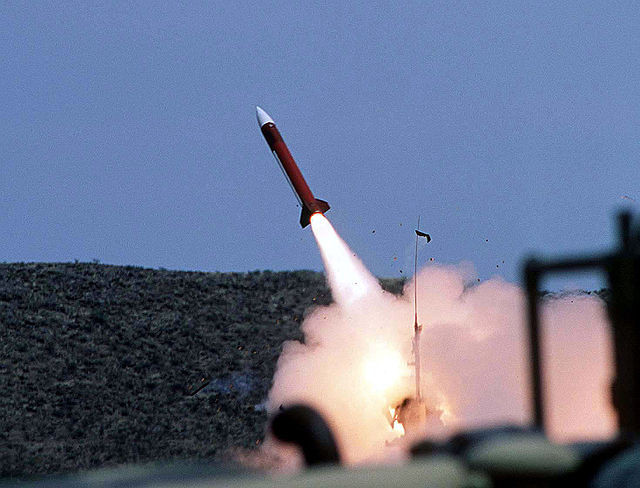Amid rising concerns over China's rapidly advancing missile technology, particularly hypersonic weapons, the U.S. Navy is moving forward with plans to integrate Patriot Advanced Capability-3 Missile Segment Enhancement (PAC-3 MSE) interceptors onto its warships, according to Reuters. This strategic move is intended to bolster naval defenses against the increasing threat posed by China's anti-ship ballistic missiles and hypersonic glide vehicles, which are capable of evading traditional defense systems. Two senior defense officials confirmed the Navy's intention to deploy these interceptors, typically used by the U.S. Army, as a part of its efforts to counter Chinese military modernization in the Indo-Pacific.
The decision reflects growing tension in the region as the People's Liberation Army (PLA) continues to expand its military capabilities. China's development of missiles like the DF-21D, commonly referred to as a "carrier killer," and the DF-26 intermediate-range ballistic missile has been a significant security concern for U.S. forces in the Pacific. The DF-27 missile, tested in 2023, is particularly alarming due to its aerodynamic warhead that can maneuver to evade defenses and strike moving targets with precision.
The PAC-3 MSE interceptors, produced by Lockheed Martin, offer a new layer of defense for U.S. naval vessels. Although the PAC-3 has a shorter range than the Navy's existing Standard Missile (SM) series, it compensates with its agility and advanced "hit-to-kill" technology, which allows the missile to destroy incoming threats by direct impact rather than a proximity detonation. This feature is seen as critical in countering high-speed, maneuverable missiles, such as hypersonic glide vehicles, that present a formidable challenge to traditional missile defense systems.
"The Patriot missile's agility and precision make it a valuable addition to the Navy's layered defense strategy," explained Tom Karako, a missile defense expert at the Center for Strategic and International Studies. "With China's hypersonic advancements, the ability to intercept these fast-moving threats is crucial."
The U.S. Navy is not alone in its efforts to enhance missile defense. The PAC-3 MSE has already been successfully used in land-based operations, notably intercepting Russia's Khinzal missiles during the conflict in Ukraine. This battlefield success has prompted increased demand for the interceptors, both from the U.S. Army and foreign governments, including key U.S. allies like Japan. Lockheed Martin is now considering expanding production capacity, including establishing a new production line in Florida, to meet this rising demand.
Testing of the PAC-3 on naval platforms has already begun. Earlier this year, a PAC-3 interceptor was tested virtually aboard a "virtual Aegis ship" using a Mk. 70 vertical launcher. The U.S. Navy is expected to conduct further testing to ensure the interceptor's seamless integration with its SPY-1 radar system, the core sensor for the Aegis missile defense system, which is already deployed across its fleet. These additional tests will be essential for validating the PAC-3's compatibility with the Navy's existing missile defense architecture.
The Navy's decision to pursue the integration of the PAC-3 interceptors comes as part of a broader U.S. military strategy aimed at deterring Beijing from initiating conflict in the Indo-Pacific or preparing U.S. forces for a potential conflict should it arise. The ongoing development of hypersonic weapons by China, including the DF-27 missile, which has a range of up to 5,000 miles, has raised the stakes in the region. These missiles, capable of maneuvering mid-flight to evade interception, pose a direct threat to U.S. naval assets, particularly aircraft carriers.
While the Navy's current SM-6 missiles can engage targets in space, the addition of the PAC-3 MSE will provide greater flexibility in responding to threats at lower altitudes. The smaller size and greater agility of the PAC-3 interceptor make it well-suited for engaging fast-moving targets, offering a crucial supplement to the Navy's existing missile defense systems.
"The PAC-3 is a highly maneuverable system that complements the Navy's existing arsenal, offering a higher probability of intercepting hypersonic threats," said a missile defense program director familiar with the Aegis system. "It's an essential step forward in adapting to the evolving threat landscape in the Indo-Pacific."






